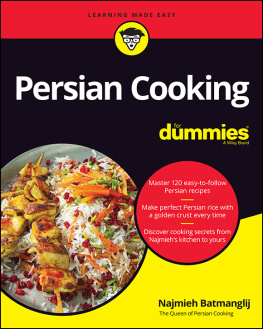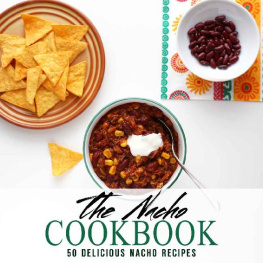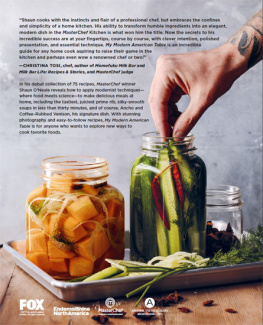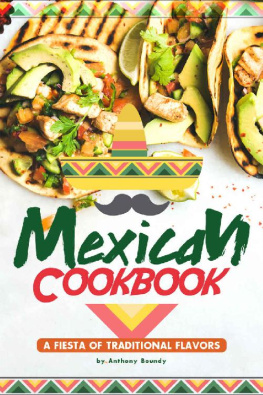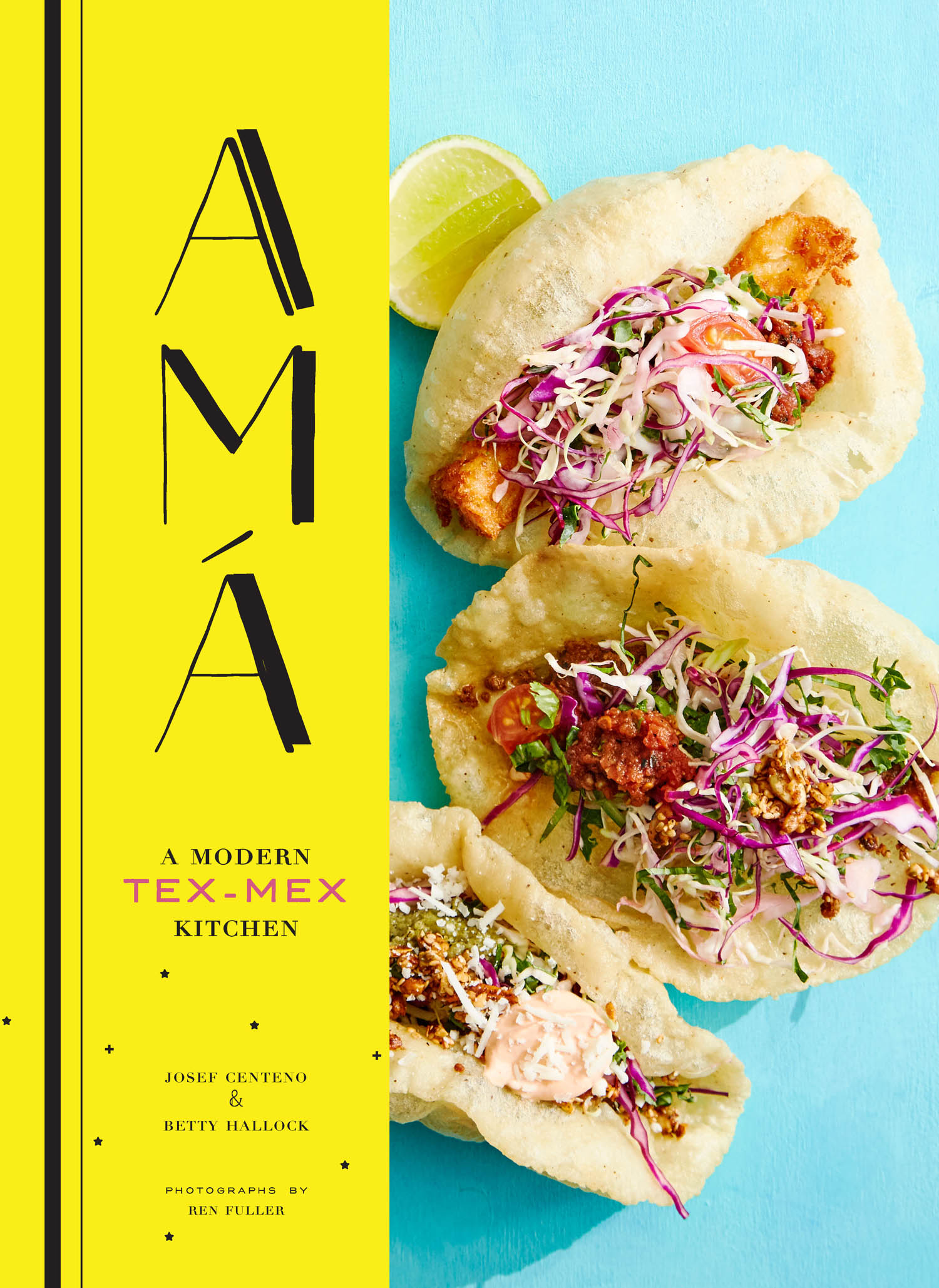



DEDICATION
I wrote this book in honor of the family I grew up withmy great-grandparents, grandparents, uncles, aunts, mom, dad, and brother. And especially in memory of Octavio Rodriguez, Uncle Andy, and Aunt JoAnn.
JOSEF CENTENO

Text copyright 2019 by Josef Centeno and Betty Hallock.
Photographs copyright 2019 by Ren Fuller.
All rights reserved. No part of this book may be reproduced in any form without written permission from the publisher.
ISBN 978-1-4521-5685-9 (epub, mobi)
Library of Congress Cataloging-in-Publication Data available.
ISBN 978-1-4521-5586-9 (hardcover)
Prop styling by ALICIA BUSZCZAK .
Food styling by JOSEF CENTENO .
Design by VANESSA DINA .
Typesetting by FRANK BRAYTON .
Chronicle books and gifts are available at special quantity discounts to corporations, professional associations, literacy programs, and other organizations. For details and discount information, please contact our premiums department at or at 1-800-759-0190.
Chronicle Books LLC
680 Second Street
San Francisco, California 94107
WWW.CHRONICLEBOOKS.COM


INTRODUCTION
Bar Am isnt so much a bar as it is a neighborhood restauranta small, noisy, friendly Tex-Mex joint, not in Texas but in the center of downtown Los Angeles, next to an alley off of Fourth Street. Why Tex-Mex? I dont know if anyone would call it a trending cuisine. In fact, some say the opposite. Id turned my back on it once, too.
Born and raised in San Antonio, I was a fairly normal angsty kid who loved skateboarding and punk music and rejected almost everything else. I wanted to escape from Catholic school, private military academy, cotillion classes, even summer trips to the Gulf Coastall the things my parents worked so hard to give me (Im sorry for being an ingrate, Mom and Dad). I wanted to be a chef, left for New York, and never looked back at the queso.
Until one day I did. I had cooked for Michelin three-star chefs at restaurants in New York, San Francisco, and Santa CruzFrench haute cuisine, Japanese-influenced omakase, progressive Spanish tasting menus. When I opened my own first restaurant in Los Angeles, Bco Mercat, I tapped into a sort of reimagined cuisine heavily influenced by the cooking of the MediterraneanSpanish, Italian, Portuguese, Moroccan, and Lebanese flavors, with a little Ethiopian and Asian, too.
But there was a kernel of a memory that was Tex-Mex. Maybe it had something to do with all the breakfast tacos and enchiladas and fajitas I loved to eat. So I went back to San Antonio, and I ate at all the old-school spots. But the tacos and queso and margaritas werent all that I was looking for. I realized there was another Tex-Mex, one that was connected to four generations of Tejanos on both sides of my family.
Joe Centeno Sr., my great-grandfather, had nothing when he arrived in San Antonio from northern Mexico, a doctors son who wanted to go his own way. But he and my great-grandmother eventually founded the first independent chain of Latino supermarkets in Texas. Before my family lost it all (the other side of the great American success story), I spent holidays at the ranch that Joe Sr. built. For big family get-togethers, there would be barbacoa and cabrito, borracho beans, my great-grandmothers potato salad, and her homemade hot sauces.
On my moms side, my great-grandparents barely escaped the Mexican Revolution alive. They settled and stayed in San Antonios West Side neighborhood. There, everything revolved around my great-grandmothers tiny kitchen. She was the legendary cook in my family, known for making a delicious meal from only a few ingredients. She was Am.
I finally realized that I wanted to honor the food I grew up with: fideo and tomatoes with cilantro and pork belly simmering on the stove, spicy menudo every Christmas and New Years, egg salad between butter-toasted bolillos, and Ta Carmens flour tortillas filled with lengua carnitas and crushed avocado, and doused with pequn chile salsa. These are some of the dishes that have inspired methe food that I was nurtured with by the people who raised me. Named for my great-grandmother, Bar Am is my version of their Tex-Mex.

THE LIFE AND TIMES OF GABINA CERVANTES MARTINEZ
Its a miracle that my great-grandmother, Gabina Cervantes Martinez, ever made it to San Antonio and lived to be nearly ninety years old. I always knew her as Am. Thats what everyone called her, and to us it basically meant boss lady. When I was growing up, she was my familys supreme matriarch, a living legend.
Am met Eulojio Martinez, my Ap, in their hometown of Irapuato in the central state of Guanajuato, Mexico, in 1910. Eulojio already had been drafted to fight for federal forces in the Mexican Revolution, leaving behind his familys bakery, butcher shop, and caf. They married in 1913. Am was barely a teenager, but her fatheronce mayor of the townand mother figured it would be safer for their daughter to be married than to stay at home, at a time when kidnappings and worse werent uncommon. Ap was only a few years older.
Am followed him as one of the wars legions of soldaderas, women who fought and camped with the army. For the most part, she managed to stick with Ap, even when he was captured. This happened so many times during the war that later he often joked about whose side he fought on. If a soldier was asked at gunpoint, Viva quien? (Long live who?) and answered incorrectly, he was shot. Better to switch allegiances in a revolution that he felt had devolved into lawlessness than to be executed on the spot.
One of my uncles told me that at the Battle of Torron, Ap had a cup of hot chocolate shot out of his hand. As a kid, that image stuck with meit was like a scene from a cowboy movie. I guess that made it somehow relatable to a six-year-old who only knew the drag of chores and Catholic school and the bliss of watching cartoons. What did I understand of war and heartache?
In the middle of the war, Am and Ap were traveling by rail across Mexico when their train rode over a bomb hidden beneath the tracks. (Soldiers were transported by boxcar, and women often rode separately, sometimes on top of the traincrazy.) The bomb detonated, and the train, which split in two, was attacked by enemy forces. In the chaos my great-grandparents were separated, and each feared that the other had been killed. Neither knew that the other had survived. Am fled, and to make a living, she and her mother-in-law ended up making tacos and selling them to passengers at a train station in central Mexico.
Next page

